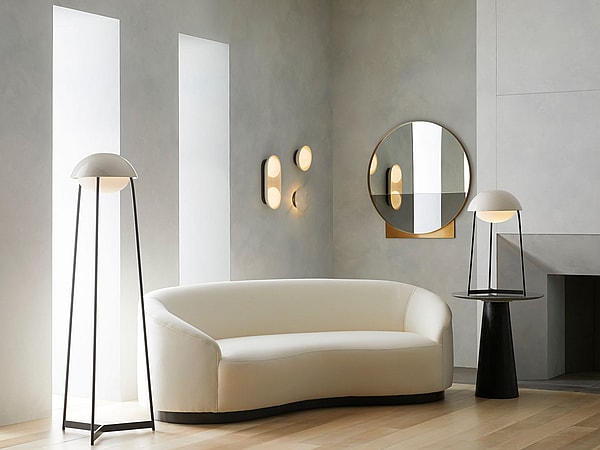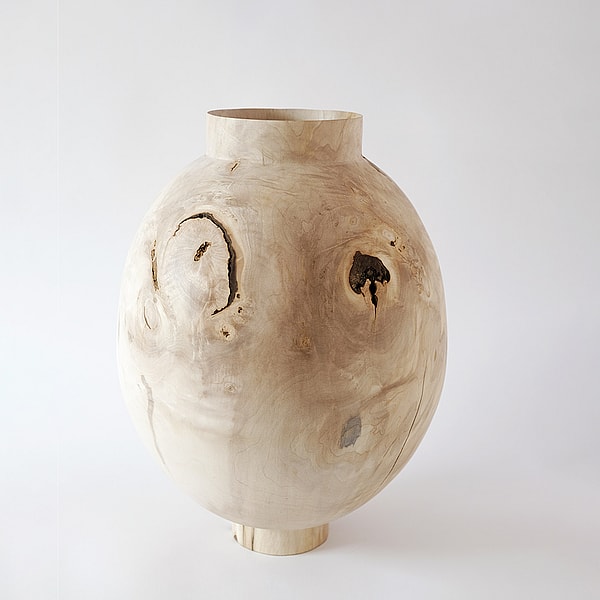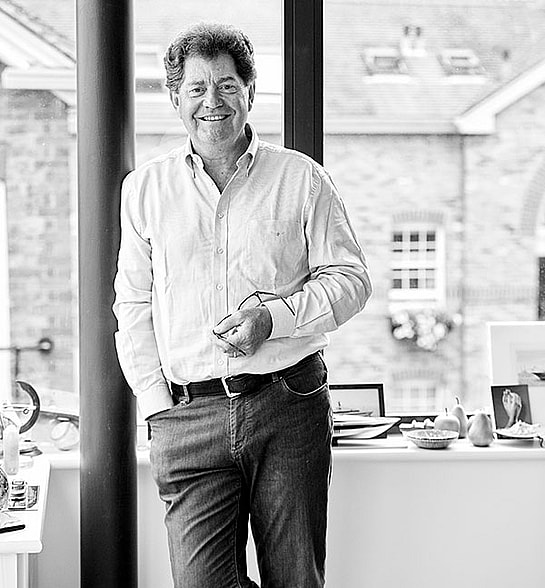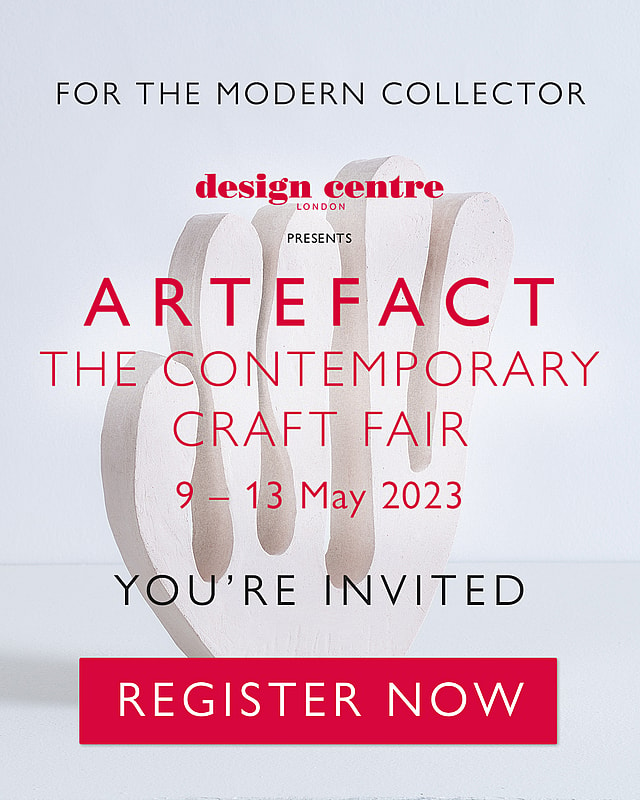Conversations in Craft
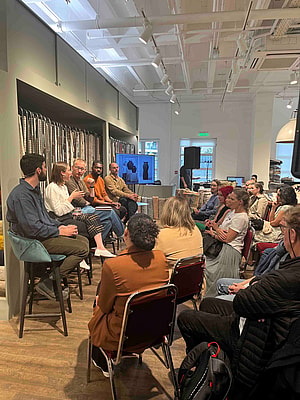 Conversations in Craft, the talks series that accompanied Artefact at Design Centre, Chelsea Harbour, brought craft – what it means, why it matters, and how it is evolving – into focus. Across the week, speakers were drawn from the worlds of interior designer, collecting and galleries, as well as makers themselves, and their collective expertise drew audiences in. Grant Gibson, host of podcast Material Matters, chaired the talks.
Conversations in Craft, the talks series that accompanied Artefact at Design Centre, Chelsea Harbour, brought craft – what it means, why it matters, and how it is evolving – into focus. Across the week, speakers were drawn from the worlds of interior designer, collecting and galleries, as well as makers themselves, and their collective expertise drew audiences in. Grant Gibson, host of podcast Material Matters, chaired the talks.
Andrew Winch, founder of Winch Design, kicked off the week with a thoughtful look back at a long career, entitled A Life in Craft. He touched on what he had learned in his early working life from legendary yacht designer Jon Bannenberg (“showmanship, presentation, communication…I learned how to push doors open”) and talked about how today’s company set-up encourages working with many specialist craftspeople.
Winch Design is currently collaborating with makers from QEST (the Queen Elizabeth Scholarship Trust) on one of London’s most prestigious new developments, the penthouse at Old War Office (OWO), and Andrew Winch also gave glimpses into some incredible examples of craftsmanship from past projects, including art deco-inspired carved and gilded panels made by DKT Artwork for the dining room of superyacht Phoenix 2; and a 12m-tall carving of a tree made from century-old mahogany, complete with a menagerie of animals, created for another superyacht project. The latter required Winch Design to set up its own carving studio, employing seven carvers, to realise it – a measure of how committed the design firm is to nurturing makers.
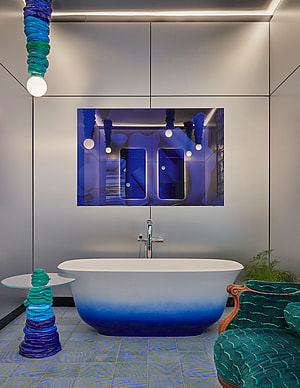 Materials were in the spotlight across the week, with a particular angle on how craft is becoming more sustainable. If the reuse of waste materials doesn’t sound like the best premise for creating objects of beauty, then the Conscious Creativity: Waste Not, Want session was there to challenge preconceptions. James Shaw is known for his extruded waste plastic – think colourful forms that look like they have been drawn in toothpaste in three-dimensions (work that was featured in the House of Rohl Bathroom at WOW!house 2022, right). He devised his own extrusion machine to make these products, and when he started a decade ago, “the tool was the project,” he says – in other words, the process was just as important as the outcome. “I’ve built up [the technique] to be a craft in itself. After ten years, we’re still learning.” Blake Joshua makes furniture from discarded newspaper waste, and felt similarly: “Just connecting to a new material, and creating new processes, gives you this deeper connection with the thing that you are making.”
Materials were in the spotlight across the week, with a particular angle on how craft is becoming more sustainable. If the reuse of waste materials doesn’t sound like the best premise for creating objects of beauty, then the Conscious Creativity: Waste Not, Want session was there to challenge preconceptions. James Shaw is known for his extruded waste plastic – think colourful forms that look like they have been drawn in toothpaste in three-dimensions (work that was featured in the House of Rohl Bathroom at WOW!house 2022, right). He devised his own extrusion machine to make these products, and when he started a decade ago, “the tool was the project,” he says – in other words, the process was just as important as the outcome. “I’ve built up [the technique] to be a craft in itself. After ten years, we’re still learning.” Blake Joshua makes furniture from discarded newspaper waste, and felt similarly: “Just connecting to a new material, and creating new processes, gives you this deeper connection with the thing that you are making.”
Considered one of the most sustainable materials of all, timber was the focus for the Wood Work session. However, it started with a caution from Maude Willaerts, assistant curator at the V&A: “Wood may be natural and renewable, but that does not always equal sustainable. We’re always thinking about that.” Poor forestry practices, the energy burden of transport and wasteful manufacturing methods all mean that makers are thinking harder than ever about how they can fulfil timber’s full potential.
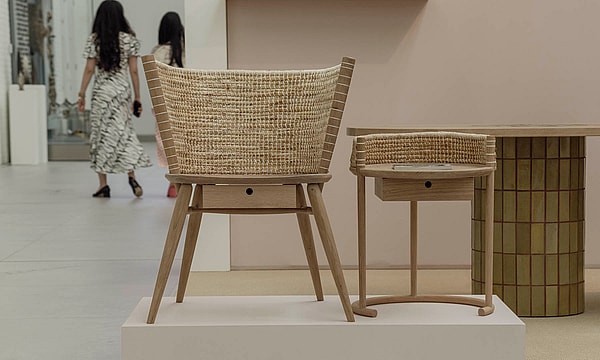
Fellow panellists Darren Appiagyei, Gareth Neal and Grant Wilkinson all had their take on the subject: for Neal it was about switching his practices to ‘slower’ making that made him as satisfied with the act of making as the finished object (some of the results of which could be seen at The New Craftsmen, exhibiting at Artefact, above); while Appiagyei uses wood that would otherwise be discarded or used as firewood. Appiagyei also had a poetic take on how his approaches his raw material: “I see wood like people – you don’t know what to expect until you come to it, and see its qualities.”
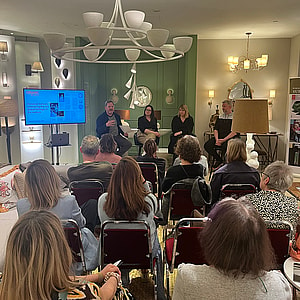 A special session hosted by Ceramic Review considered all things collecting: the role of gallerists, how museums’ acquisition policies are changing and what might be the next big thing now that 20th-century names such as Lucie Rie and Hans Coper have created a market for ceramics that has never been more buoyant. “Having one of your artists in a museum is incredibly important. It’s about being seen,” said gallerist Julia Cavaliero, whose gallery, Cavaliero Finn, is exhibiting at Artefact. “There’s a system: the artist/maker, then the galleries supporting them and choosing their best work, then collectors and museums. It’s a support network.” Collector and author Ashley Thorpe commented on how the Loewe Craft Prize has also done much to give craft a more prominent platform and bring new audiences, saying it was perhaps easier for craft to make connections with people because it has “a frisson of functionality that offers something a painting can’t”. Something common to all creative industries – whether art, design or interiors – is the importance of storytelling. “Narrative is really important,” says Cavaliero. “If you tell a story to a collector, then they understand [someone’s] work.”
A special session hosted by Ceramic Review considered all things collecting: the role of gallerists, how museums’ acquisition policies are changing and what might be the next big thing now that 20th-century names such as Lucie Rie and Hans Coper have created a market for ceramics that has never been more buoyant. “Having one of your artists in a museum is incredibly important. It’s about being seen,” said gallerist Julia Cavaliero, whose gallery, Cavaliero Finn, is exhibiting at Artefact. “There’s a system: the artist/maker, then the galleries supporting them and choosing their best work, then collectors and museums. It’s a support network.” Collector and author Ashley Thorpe commented on how the Loewe Craft Prize has also done much to give craft a more prominent platform and bring new audiences, saying it was perhaps easier for craft to make connections with people because it has “a frisson of functionality that offers something a painting can’t”. Something common to all creative industries – whether art, design or interiors – is the importance of storytelling. “Narrative is really important,” says Cavaliero. “If you tell a story to a collector, then they understand [someone’s] work.”
Other sessions across the week included a talk with renowned ceramicist Alison Britton OBE; a conversation about colour with colour consultant Justine Fox, artist and maker Frances Priest and textile artist Majeda Clarke; and a discussion with Alun Graves, senior curator of ceramics and glass at the V&A, to trace the history of the British studio ceramics movement.



